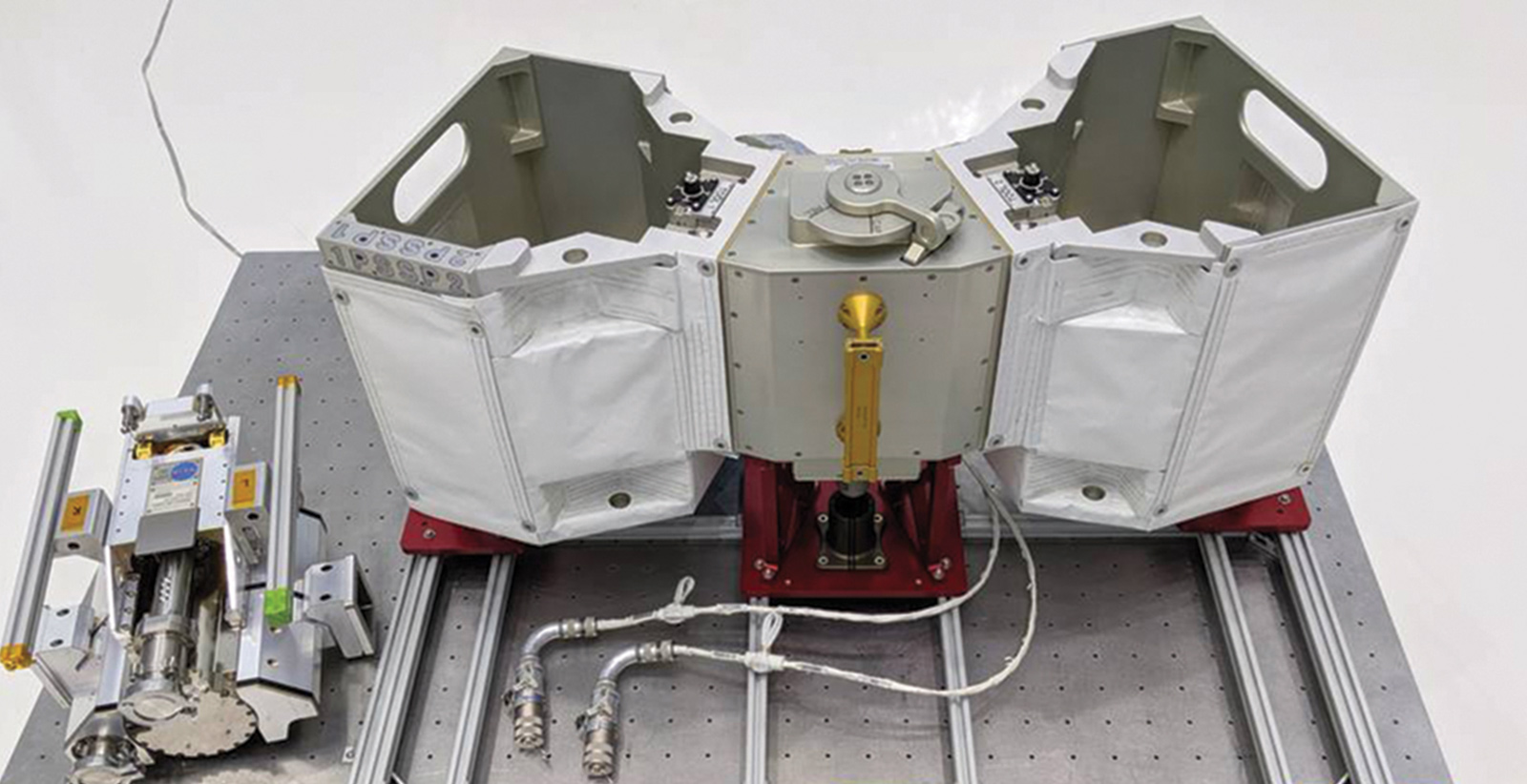Stay Up to Date
Submit your email address to receive the latest industry and Aerospace America news.
The Space Automation and Robotics Technical Committee works to advance the development of automation and robotics technologies and their applications to space programs.
The Mars 2020 mission launched from Cape Canaveral in Florida in July with the Perseverance rover and the Ingenuity helicopter headed to Mars to land in the Jezero Crater. Perseverance is based on the Curiosity rover but with several upgrades, adding about 50% more payload. It also can collect and cache samples for a future return mission. Ingenuity is a flight demonstrator that will be the first attempt at controlled flight on another planet. At 1.8 kilograms and with carbon fiber blades that spin at 2,400 rotations per minute, Ingenuity is designed to operate in an atmosphere that is less than 1% as dense as Earth’s atmosphere.
Astronauts installed the Robotic Tool Stowage storage unit on the International Space Station during a spacewalk in July. NASA’s Exploration and In-Space Services, or NExIS, delivered RiTS to the ISS in December 2019. Two Robotic External Leak Locator tools are in the RiTS, which provides the RELLs with thermal and physical protection and allows them to be readily deployed by the Special Purpose Dexterous Manipulator. RELLs are used to detect the location of external ammonia leaks and to rapidly confirm a repair, thereby eliminating the need for spacewalks to carry out the same tasks. The RELL and RiTS capabilities could be useful for exploration missions and future human habitats, including the Gateway.
In January, Maxar finalized a $142 million contract with NASA to perform an in-space assembly demonstration using the Space Infrastructure Dexterous Robot, or SPIDER. The lightweight robotic will be integrated with the spacecraft bus that Maxar is building for NASA’s On-Orbit Assembly and Manufacturing-1, or OSAM-1, formerly Restore-L, which will refuel a satellite in low-Earth orbit. In April, engineers installed the fuel tank for OSAM-1 in Maxar’s California factory. NASA also contracted with Maxar in February for Maxar’s Sample Acquisition, Morphology Filtering and Probing of Lunar Regolith robot arm. SAMPLR will acquire samples on the moon and determine the geotechnical properties of lunar regolith.
Canadian company MacDonald, Dettwiler and Associates Corp. announced in May that it received a contract worth $145 million ($190 million Canadian) to support robotic operations on the ISS from 2020 to 2024. MDA will provide logistics and sustaining engineering services to the Canadian Space Agency and its international partners for the ISS program. In June, the Canadian minister of Innovation, Science and Industry announced that Canada intends to contract with MDA to build Canadarm3. The Canadarm3 will be the next-generation smart robotic arm, a small dexterous arm and a set of specialized tools. Using advanced machine vision, cutting-edge software and advances in artificial intelligence, this highly autonomous system will be able to perform tasks without human intervention.
In March, the Dextre and Canadarm2 robotic systems on the ISS extracted the Bartolomeo platform from a SpaceX Cargo Dragon spacecraft and installed it on the ISS’s Columbus module. Bartolomeo is a new platform for small commercial payloads that significantly expands the station’s capability to host commercial experiments. Dextre was used in the emergency removal and replacement of a failed power module for one of the ISS solar arrays. The module failed on July 1 and was replaced within six days, restoring the station’s full power capabilities.
Contributor: Laurie Chappell
Related Posts
Stay Up to Date
Submit your email address to receive the latest industry and Aerospace America news.




